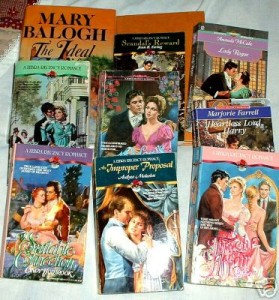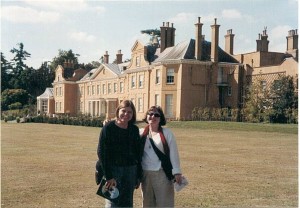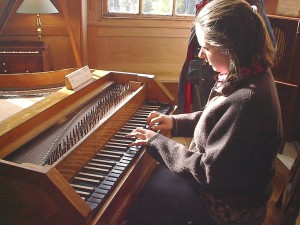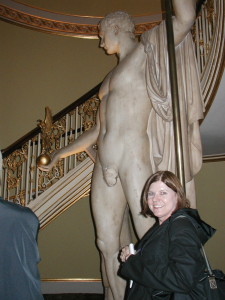I’m about to start writing a new book, so this is a good time to remind myself of what qualities I need in a hero. Years ago in my pre-blogging days, I wrote an article about romantic heroes. I looked it over and thought to share it with you.
 Here are, in my view, 10 qualities essential in a romantic hero, as I wrote them over ten years ago.
Here are, in my view, 10 qualities essential in a romantic hero, as I wrote them over ten years ago.
1. Be flawed. Surprisingly, women don’t want the heroes of romance novels to be perfect. Perfect is boring. After all, if the hero has no flaws, what can the heroine offer him? Romantic heroes are often arrogant, short-tempered, and tough. They are complex and full of paradox. The romance reader wants the hero to overcome his faults, grow emotionally, and rise to grander heights because of his relationship with the heroine. Love enriches him and makes him into a better person.
2. Be self-assured. No, this does not contradict tip number one. The romantic hero knows himself well. He knows his strengths and weaknesses and accepts himself as he is. He has come to terms with who he is and, as a result, has confidence and surety of purpose. The heroine is attracted to his confidence, though her challenge that he become a better person always shakes him up. The hero is less sure of himself in her presence. She upsets his equilibrium.
3. Be tough. The romantic hero handles adversity, tolerates pain. He does the difficult jobs, the ones that need doing, that no one else wants to do. Romantic heroes are often special military men, like Navy Seals, or policemen, or rescue workers risking their lives for others. The worlds they inhabit are often bleak and depressing, as well as dangerous. The romantic hero is often emotionally (and physically) wounded, and the heroine’s love is what he needs to heal.
4. Be controlled. Though tough and often foul-tempered, the romantic hero nonetheless exhibits remarkable self-control. He shoulders his burdens without complaint and nevers dumps those burdens on others. He is too self-disciplined to discharge his emotions onto others. The heroine, then, helps him loosen up enough to risk sharing some of his burdens with her.
5. Be trustworthy. The romantic hero is a man of his word. If he says he will do something, he will do it. The heroine can count on him; especially, she can entrust her own vulnerability to him and know that he will not betray her. The plots of romantic novels sometimes include elements where the hero seems untrustworthy and might appear to betray the heroine; however, the reader always knows he will reveal himself to be unwaveringly true to her.
6. Be ethical. The hero’s strong sense of ethics is closely related to his trustworthiness. The romantic hero knows what is right and what is wrong. He stands by his beliefs even in the face of his own annihilation; indeed, even if he fears that, in doing so, he will lose the heroine’s love. The hero is not afraid to stand alone for what is important to him. He plays by the rules, though sometimes the rules are of his own making. He does not prey upon the less fortunate, but saves his strength to fight injustice.
7. Value equality. The romantic hero accepts his heroine as his equal, although it sometimes takes the whole book for him to learn to do so. He becomes less fixated on having his own way and learns to consider the heroine’s needs, wishes, and goals as equally important as his own. Rather than bully and dominate, he seeks to achieve an equitable balance between himself and the heroine, one in which they both are winners. He might even learn to cook.
8. Be physically fit. In romance novels, the hero’s fitness often reaches idealized perfection, but the important point is he values his body and his health. He may stretch his physical abilities to the limit and beyond, but he would never neglect himself physically or abuse his good health. At least, not once he meets the heroine.
9. Be sexually generous. Sometimes the romantic hero begins the book focused on superficial sexual relationships and his own pleasure. His relationship with the heroine, however, travels beyond the sexual. Lovemaking is one area where the hero can show the heroine his love. In his lovemaking, he gives as much or more than he takes. It is essential to him to please the heroine, to show her physically that he loves her. To his wonderment, the pleasure he receives from their lovemaking is intensified by his generosity.
10. Finally, be sure to have dark-as-night hair with a habit of falling waywardly across your forehead. The romantic heroine will ache to gently comb the unruly hair back into place with her fingers.
Actually, is it not really essential a hero have dark, touchable hair. Romance heroes come in all shapes, colors, and sizes. It is essential, though, that the romantic hero act like a hero.
What do you think? Did I miss anything?
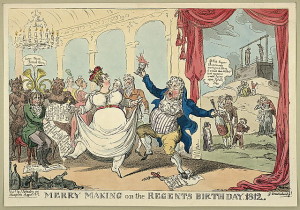 In the Regency, modest celebrations on birthdays were the norm, unless you were royalty. If you were royalty BIG celebrations might be in order. Non-royal families would celebrate with a cake or some special treat, but not the big party with lots of presents and balloons and lots of cake and ice cream that we think of when we think of birthday parties.
In the Regency, modest celebrations on birthdays were the norm, unless you were royalty. If you were royalty BIG celebrations might be in order. Non-royal families would celebrate with a cake or some special treat, but not the big party with lots of presents and balloons and lots of cake and ice cream that we think of when we think of birthday parties.

